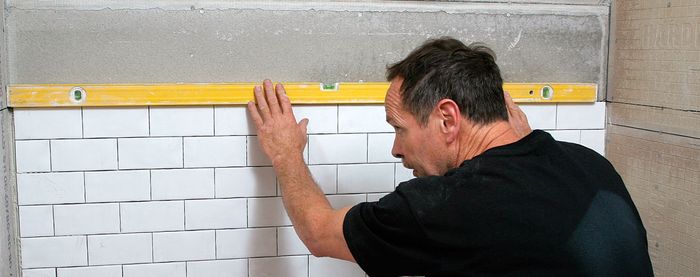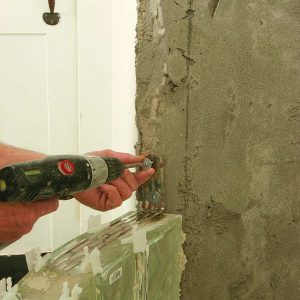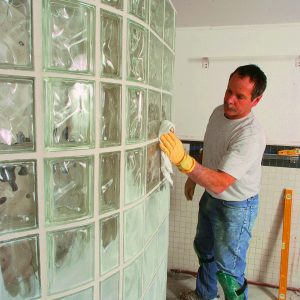Glass-Block Shower on a Curve
This shower-stall alternative lets in the light, offers privacy, and makes a small space feel roomy.

Magazine extra: Watch Tom demonstrate how he easily makes curves in tile with a ring-blade tile saw. Don’t own a specialty saw? Watch Tom turn the curve with identical results using his standard wet saw, a grinder, and nippers.
It wasn’t long ago that shower stalls were made to serve one purpose: getting you clean. Color choice was the only real aesthetic concern; size and shape were considered matters of utility and efficiency.
Now, people think of showering as an important part of the day, both physically and mentally. The small dungeons of the past are being replaced with functional works of art. To this end, I think that glass block blows away most other shower options.
Glass-block showers are a great way to let in some light and to provide a sense of openness and freedom, even in a small bathroom. Glass blocks offer tremendous design flexibility, yet the subtle visual distortion of glass affords full privacy. No more dungeons.
New accessories make for an easier installation
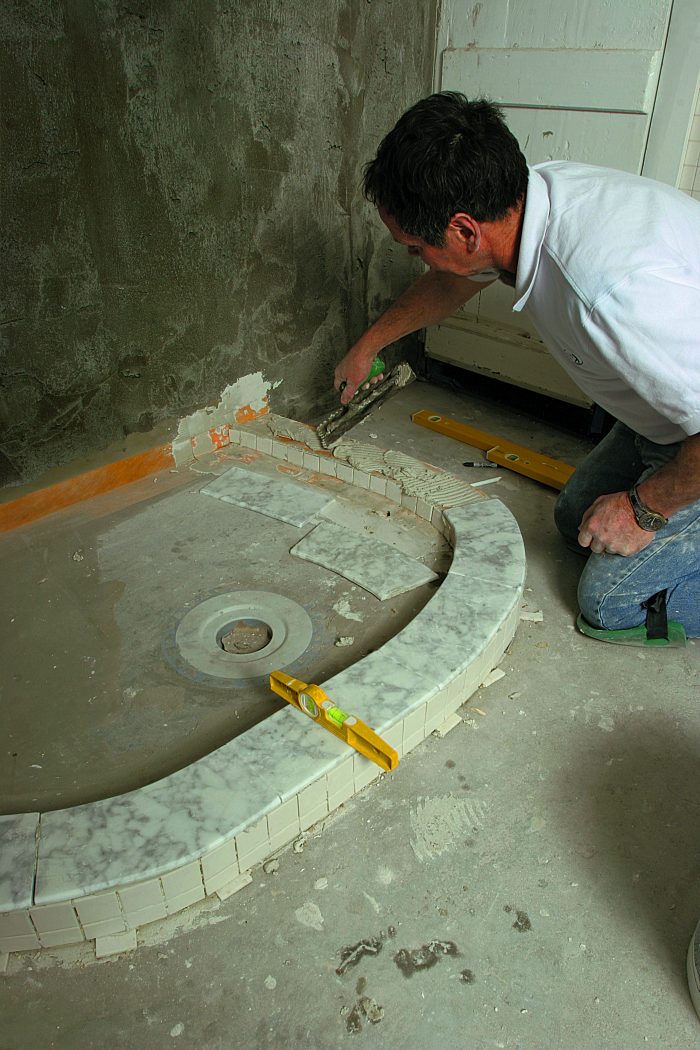
If you wanted a glass-block shower a decade ago, I would have told you to find a mason— and for good reason. Unless you have experience, glass blocks are hard to keep straight and plumb. The best that beginners could hope to accomplish was a couple of courses at a time, and they would likely still struggle to keep the work in line until the mortar set up.
With just one change in design from a basic wall supported on all four sides—whether it’s the addition of a curved surface, a wall that stops short of the ceiling, or one that is unsupported on one end—the project becomes more complicated. Some projects, such as the shower that’s featured here, combine all these complications and then some.
Now, though, glass-block manufacturers like Pittsburgh Corning are taking a bit of the fear out of the process by offering helpful installation accessories. The cornerstone of these accessories is the glass-block spacer. These pieces of plastic lock each block in place as it is installed, and are left in place and covered by grout. More work can be done at one time, and the blocks don’t shift or slip out of place as easily.
Don’t get me wrong: Glass-block installations still take patience and careful attention to detail. But I hope these installation accessories combined with my hard-learned installation tricks will help to ease what was once a much steeper learning curve.
Build the curb with concrete blocks
A straight shower curb can be built by doubling up 2x4s and nailing them to the floor, but curves are more work. For curves, I arrange a row of glass blocks on the floor into the desired shape, trace around them, cut concrete landscape blocks to fit the shape, and set them in thinset. next, I float a mortar bed for the shower floor and cover the curb with a waterproof membrane. Square shower pans can be waterproofed with a one-piece vinyl membrane like Chloraloy (www.noblecompany.com), but I like the Kerdi system (www.schluter.com) for curved pans because the membrane can be cut into wedges and overlapped where needed to get around tight curves.
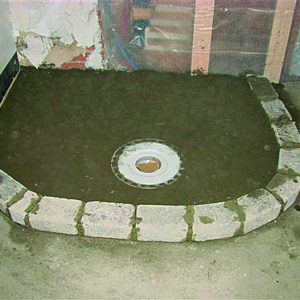 |
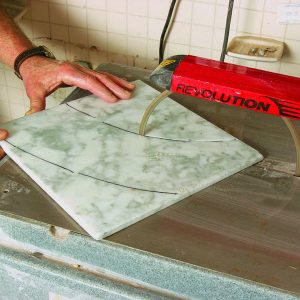 |
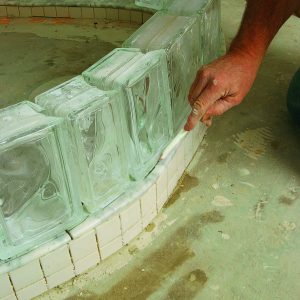 |
Take extra time to set the first course
The first course of glass blocks sets the stage for the entire installation. Take as much time as necessary to get the blocks strongly adhered and perfectly level in both directions before moving on.
Mix the mortar stiff
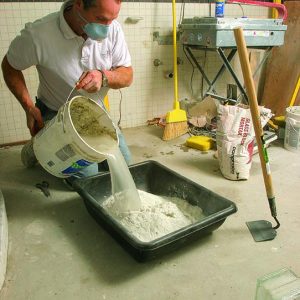
Reinforce as you rise
For this job, I had an entry opening on one end of the shower wall, and the glass blocks also stopped short of the ceiling. Without using the manufacturer’s panel anchors, rebar, and block spacers, the wall would have been pretty shaky. Take the time to reinforce the wall where recommended.
Clean, grout, and clean again
The final stages of a glass-block installation are always the most gratifying. Remove excess mortar, pack the joints with grout, and clean the glass to a glistening shine.
A pair of levels keeps things in line
Glass blocks around door openings often shift during assembly. To keep things in line, I clamp a long level to the face of the glass blocks, then clamp a short level to the long level so that I can check for plumb in two directions as I work. As new blocks are placed, I fasten them to the levels with painter’s tape to keep them from shifting.
From Fine Homebuilding #200
For more photos and step by step instructions on how to install a glass-block shower, click the View PDF button below.
